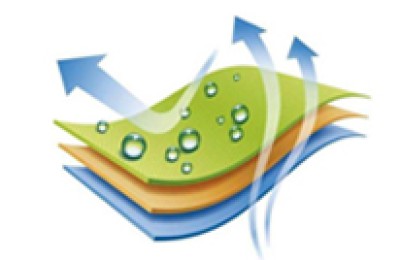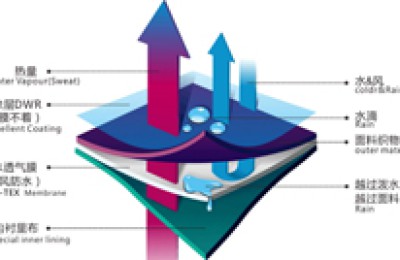At 0:00 on April 8, a full moon night,
the Wuhan-Lihan-Hui channel was unblocked, and the 75 control points on the Li-Han channel in Wuhan were all removed.
The domestic epidemic has just subsided, but it is not time to relax our vigilance. The global spread of epidemics abroad is intensifying, and there is a global shortage of epidemic prevention materials, causing sharp fluctuations in market prices in upstream and downstream industries. For example, the price of melt-blown cloth, the core raw material for the production of masks, is almost the same every day, and the demand and sales of melt-blown cloth are all over the entire Chemical Fiber App supply and demand platform.
Under the recent evolving epidemic, the gap in meltblown cloth has reached peak. It has risen from 20,000 to 650,000, then dropped from 650,000 to 150,000, and now it has rebounded from 150,000 to 500,000. It can be described as twists and turns.
Following the second round of rising prices for meltblown cloth, the price of hot-air cotton, another material for masks, has also reached its peak.
A boss who switched to producing masks told the editor, “From more than 10,000 a week ago to 89,000 now, the price of hot air cotton is still rising, it’s going to skyrocket!” “Now the price of hot air The price of cotton is rising at a rate of about 15,000 per day.”
The price of hot air cotton has skyrocketed in a short period of time! Many mask owners have made full payment orders at low prices! I received a large amount of refunds… This is very much like the meltblown cloth in early February!
The price of hot air cotton displayed on Alibaba on April 8
What is hot air cotton? Hot air cotton non-woven fabric, also known as hot air cotton and tuyere cotton, is made of ES and low melting point fibers through heating and synthesis, so it is also one of the synthetic fiber filter cottons.
N95 mask components
Hot air cotton non-woven Cloth is a filling material in N95 masks. In order to achieve both warmth and protection, some manufacturers use hot-air cotton non-woven fabrics with high fluffiness, good elasticity, soft feel, strong warmth retention, and good breathability and water permeability to be sandwiched between N95 folding masks, which mainly serve as primary filtration and heat preservation. It has the functions of heat insulation, moisture-proof and moisture-proof, and improves the comfort of the wearer.
Although hot air cotton non-woven fabric is a filter material, its filtration level can only reach primary filtration. Therefore, it cannot replace the “heart” of N95 masks in N95 masks. Melt-blown cloth .
KN95 is recognized abroad, and demand has surged
As of April 10, the number of new coronavirus cases worldwide has reached nearly 1.6 million, with confirmed cases in the United States The number of cases has reached 460,000. The United States is facing a sharp increase in COVID-19 cases and a sharp shortage of medical supplies! Under pressure!
On April 3, the U.S. Food and Drug Administration (FDA) changed its attitude towards KN95 masks from China and announced that KN95 masks meet its standards.
The huge demand for masks is shifting from domestic to foreign countries. At present, the export of masks has entered the second stage. According to Qichacha data, there will be as many as 31,716 newly established mask manufacturers in 2020!
“At present, more than 2,000 KN95 mask machines have been added in China. The demand has increased sharply. Some manufacturers are looking for materials and raising cloth prices.”
Now the number of domestic mask manufacturers has exceeded 100,000, the domestic market is becoming saturated, and the number of mask manufacturers exporting abroad has already exceeded 100,000.The best choice for you!
Some manufacturers raise prices from the ground up, and there are middlemen who make the difference
Industry insiders revealed that compared with some previous melt-blown cloths, Like suppliers, hot air cotton suppliers are quite “strong” in the market. Not only are the shipments shipped with less or no invoices, but downstream factories are also required to use “hard currency” masks as discounts, and additional cash is required.
On the circulation side, there are also middlemen who take the opportunity to make profit from the price difference.
A small and medium-sized enterprise owner who has switched to producing masks told reporters that in some WeChat groups for connecting mask raw material resources, middlemen are arbitrarily charging high prices. “They immediately offered a high price of more than 500,000 yuan per ton for melt-blown cloth, and a high price of more than 100,000 yuan for hot-air cotton. They took advantage of our lack of supply and rushed production. They often said, ‘If you want it, hurry up and transfer it. If you don’t want it, others will take it.” goods’, creating a sense of tension of ‘instant price increase and instant sale’.”
According to industry insiders, many people stock up and sell goods, and when they sell, they increase the price significantly. Many melt-blown cloths and hot air Cotton and other materials stay in warehouses and circulation links, waiting for price increases, and supply and demand cannot be well matched.
The person in charge of a newly converted mask in Fujian said, “The prices of ordinary non-woven fabrics have also increased a lot. The price of melt-blown fabrics is around 500,000, and hot-air cotton is now even available. The manufacturer offers a price of 130,000 per ton.”
Many traders currently have no goods in hand. The original price of hot-air cotton was 15,000 per ton, but now the price has increased at least seven or eight times! It’s already hard to find a piece of cotton!
As hot air cotton is in short supply, its raw material ES fiber has also become a hot commodity!
After the Qingming Festival, ES fiber suddenly became the most sought after product. The price rose from 8,000-9,000 yuan/ton before the holiday to 15,000-16,000 yuan/ton on April 5, and even rose to 30,000 yuan/ton on April 8.
What is ES fiber, and why is it suddenly so popular?
ES fiber: First developed by Japan’s Chisso Company, it is a new type of polyolefin-based composite fiber. The fiber mainly has a sheath-core structure. The skin layer has a low melting point and good softness, and the core layer has a high melting point and high strength. The main raw material of hot air cotton (air outlet cotton) is ES fiber.
According to different raw materials, the ES fibers currently on the market are mainly divided into two types: PE/PP and PE/PET, and the product specifications are mainly 1.5~6D. There are two theories about the popularity of ES in the market:
1. The inner layer of N95 masks contains a layer of hot-air non-woven fabric. The increase in external orders has led to a surge in ES demand; why was the domestic epidemic so severe before? , ES has not been hyped? The answer given by market participants is that the previous domestic demand was for ordinary medical masks, which did not use hot air non-woven fabrics. In addition, the epidemic situation abroad far exceeded that in China, and the demand for N95 masks surged.
2. Melt-blown non-woven fabrics are relatively expensive, and hot-air non-woven fabrics are used to replace melt-blown fabrics, resulting in a surge in demand. The current price of meltblown fabric is 300,000 yuan/ton. Relatively speaking, the price of hot air non-woven fabric was 20,000 yuan/ton before the price increase. On April 5, it rose to 70,000-80,000 yuan/ton. Updated on April 8 It has risen to 120,000-150,000 yuan/ton. But compared with melt-blown cloth, the price is still lower.
Domestic hot-air cotton production companies vary in size, and competition in the industry has always been fierce. This epidemic has intensified competition. Those with good strength and close upstream and downstream relationships can easily obtain raw materials. However, some small and medium-sized enterprises are facing another production suspension due to lack of meltblown cloth and hot air cotton.
No matter what the truth is, ES fiber has now reached the point where it is hard to find one. Factories generally schedule orders for half a month to a month, prices continue to rise sharply, and new production capacity is also accelerating. .
Despite this, the market demand is still difficult to meet, so low melting point 2D products are beginning to attract people’s attention.
Low-melting point staple fiber is also a sheath-core structural fiber, but the sheath-core is PET. IPA is added to the skin layer to lower the melting point and play a bonding role. The greater the blending ratio of low-melting point staple fiber, the greater the hardness of the non-woven fabric, so it is not as soft as ES fiber.
Today, the quotations of 2D low-melting point staple fiber production plants Jiangsu Youcai and Ningbo Dafa generally rose by 500 yuan/ton to 7800-7900 yuan/ton. If the demand for 2D specifications with low melting point is strong in the future, it is not ruled out that low-melting point staple fiber factories will increase the proportion of products, which will also play a driving role in the overall low-melting point market.
</p






